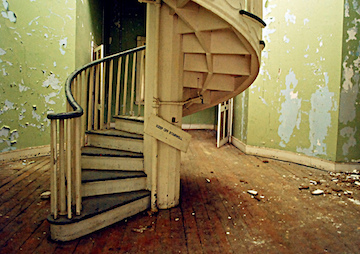Economic Averages Distort Views on U.S.’ Increasingly Unequal Economy
The income, employment and real estate values measured in the richest parts of the country are pulling up the numbers that officials and lawmakers use to craft domestic economic policy. i threw a guitar at him / CC BY-SA 2.0
i threw a guitar at him / CC BY-SA 2.0
The income, employment and real estate values measured in the richest parts of the country are pulling up the average numbers that officials and lawmakers use to craft domestic economic policy.
“The averages certainly don’t tell the whole story,” says Carl Tannenbaum, chief economist at Northern Trust and a former Federal Reserve economist. “The political reaction to the economy,” which, by a review of more precise numbers and the anger visible throughout the country, is inadequate, “leads me to wonder if we’re looking at the wrong things.”
Consider incomes for the average U.S. household. They ticked up 0.7 percent from 2008 to 2014, after taking inflation into account. But even that scant increase reflected mainly the rise in income for the richest tenth of households, which pulled up the average. For most others, incomes actually decreased — as much as 6 percent for the bottom 20 percent, at a time when the economy was mostly recovering.
Or consider employment. The U.S. economy has added a healthy average of roughly 200,000 jobs a month since 2011. Yet most have been either high-paying or low-paying positions. By the end of 2015, the nation still had fewer middle-income jobs than it did before the recession, according to the Georgetown University Center on Education and the Workforce.
That reflects what economists call the “hollowing out” of the workforce, as traditional mid-level positions such as office administrators, bookkeepers, and factory assembly-line workers are cut in recessions and never fully recover their previous levels of employment.
“Part-time jobs surged in the recession, too”:
… and remained high in the recovery, even while full-time work was slower to return. The number of full-time jobs has risen just 1.3 percent since December 2007, when the recession officially began. Part-time positions are up more than 12 percent.
In Memphis, hiring resumed after the recession and the unemployment rate has dropped to match the national figure of 5 percent. But jobs in low-paying industries, such as retail, restaurants and hotels, are the only category to have fully recovered from the recession, according to Moody’s Analytics. Higher- and middle-paying jobs still trail their pre-recession levels.
In Millington, a Memphis suburb where [Donald] Trump held a rally in February at a military airfield, residents complain that most of the available jobs are in the fast-food chains that dot Highway 51, the main thoroughfare.
“The rebound from the recession has been felt in vastly different ways not only by income levels but across geographic lines”:
Areas like Las Vegas that still bear deep scars from the housing crisis have lagged behind the nation’s recovery. So have cities like Memphis that need robust consumer spending to fuel growth at the shipping and logistics firms that form the backbone of its economy.
By contrast, cities like Seattle, Denver and Austin, Texas, with heavy concentrations of information technology, management consulting or other highly paid services, have enjoyed a disproportionate share of the job and income growth.
In other words, the richest places in the country are making the economy look better than it actually is, while places like Memphis stagnate.
—Posted by Alexander Reed Kelly.
Your support is crucial…With an uncertain future and a new administration casting doubt on press freedoms, the danger is clear: The truth is at risk.
Now is the time to give. Your tax-deductible support allows us to dig deeper, delivering fearless investigative reporting and analysis that exposes what’s really happening — without compromise.
Stand with our courageous journalists. Donate today to protect a free press, uphold democracy and unearth untold stories.






You need to be a supporter to comment.
There are currently no responses to this article.
Be the first to respond.